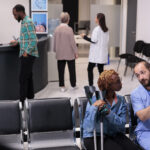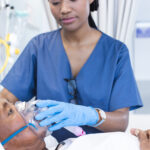When hospital executives are asked about their specialty programs, both in terms of reputation and profitability, orthopedics and cardiology are often on the top of the list.
But that may soon be changing.
A great deal of attention has been paid to the proposal by the Centers for Medicare & Medicaid Services (CMS) to remove total knee arthroplasty from the inpatient-only list as of Jan. 1, 2018 and to seek comments from the provider community about not only removing hip arthroplasty from the inpatient-only list in 2019, but also allowing both hip and knee arthroplasties to be performed in ambulatory surgery centers (ASCs).
While these proposals received the most attention out of all outlined in the 2018 Outpatient Prospective Payment System (OPPS) Proposed Rule, another request for comments in the OPPS Proposed Rule has significant implications – but has not seemed to receive any attention. With the request titled “Definition of ASC Covered Surgical Procedures,” CMS is suggesting that there are “surgery-like” procedures that are currently excluded from coverage in ASCs, but conceivably could be performed there.
CMS currently uses the CPT® code range 10000-69999 to define surgery. CMS then evaluates each surgery to determine which do not pose a significant safety risk, which would create an expectation of requiring an overnight stay when performed in an ASC, and which are separately paid under the OPPS. They also consider procedures outside that CPT range, but those that are clinically similar to covered procedures.
The risk to hospitals, which is buried within this request for comment, is that CMS is open to considering “certain cardiac catheterization services, cardiac device programming services, and electrophysiology services should be added to the covered surgical procedures list.” CMS does not provide a list of which of the many procedures within this description they may consider, but it is not hard to speculate.
Clearly, elective cardiac catheterization would be included. Patients evaluated by their physician as outpatients and determined to need anatomical visualization seem to meet the standard, being relatively safe and generally requiring no overnight stay. What may be more contentious is angioplasty and stent placement. While these procedures traditionally have required an overnight stay, as stents improve and radial artery catheterization is more prevalent, the need is decreasing. The same is true for electrophysiology procedures, whereby more precise techniques have reduced the risks to the patient and need for overnight monitoring significantly.
While for some it is difficult to imagine performing catheterization procedures in an ASC, it should be noted that CMS already allows peripheral angioplasty and stenting to be performed in such a setting. There is also a growing number of ASCs that perform cardiac and electrophysiologic procedures, including pacemaker placement and ablations on patients with non-Medicare insurance.
Orthopedic surgeons have embraced ownership of ASCs with a patient population that includes patients of all ages, and therefore a large patient population eligible for surgery at an ASC. But the age distribution of patients who require cardiac evaluation and intervention tend to concentrate with those 65 and older, so the inability to perform diagnostic studies and interventions at an ASC has limited cardiologist interest in investing in ASCs. The confusing federal regulations concerning physician investment in ASCs has also likely led many to avoid investment.
Since CMS is simply requesting comments at this time and not making an actual proposal, the procedures would not be added to the ASC list until 2019 at the earliest. But if CMS includes the tone of the comments it received regarding the 2018 OPPS Final Rule, we may know as soon as November what the future may hold. And if that includes allowing cardiac and electrophysiologic procedures, and especially interventional procedures, to be performed in ASCs, we can expect to see a significant increase in cardiologists’ and electrophysiologists’ interest in ASCs – along with increasing concern from hospitals about the loss of these patients and the associated revenue.
And finally, on Sept. 6, CMS posted some of the comments they received on the OPPS Proposed Rule. Of the 482 comments that were posted, more than 150 were from Texas ambulatory surgery centers advocating for allowing cardiac procedures at ASCs. A coordinated campaign such as this can influence CMS decision-making. Time will tell if other states respond as vigorously.
CMS is accepting comments until Sept. 11, 2017 online at https://www.regulations.gov/document?D=CMS-2017-0091-0002














